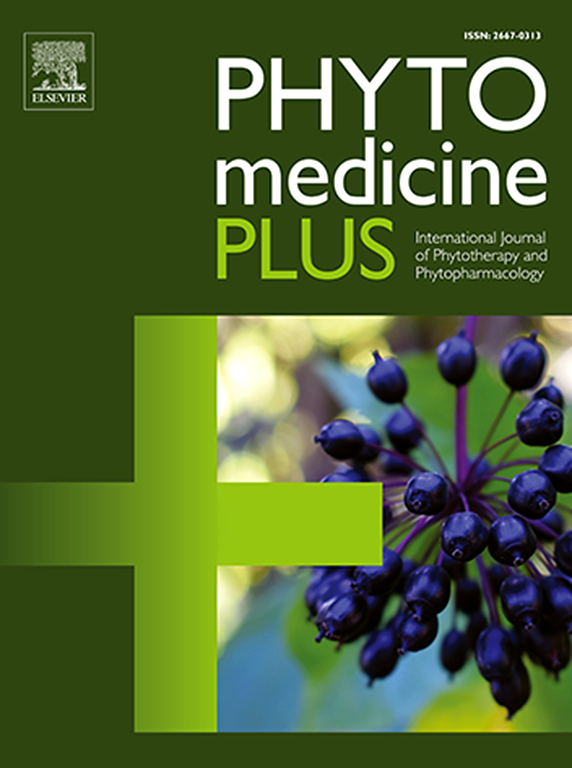Diuretic effects of hydromethanolic extract of Rumex nepalensis Spreng. leaves and its solvent fractions in mice
Q3 Pharmacology, Toxicology and Pharmaceutics
引用次数: 0
Abstract
Background
The leaves of Rumex nepalensis Spreng. have been traditionally utilized for treating urinary retention and as a diuretic, but scientific validation is limited.
Purpose of the study
This study aimed to evaluate the diuretic activity of R. nepalensis leaf extract and solvent fractions using standardized experimental models.
Methods
The leaves of the plant were dried under shade, crushed to a coarse powder, and subjected to cold maceration with 80% methanol and concentrated. A portion of the crude extract was taken and fractionated using solvents of increasing polarity: n-hexane, ethyl acetate, and water. The mice were divided into different groups, including negative control groups (received 2% tween 80 or distilled water), positive control groups (given 10 mg/kg of furosemide), and experimental groups receiving the 80% methanol extract or its solvent fractions at doses of 100, 200, and 400 mg/kg orally. Then urine volume was measured at 1st, 2nd, 3rd, 4th, and 5th hours post-dosing of the treatments. Meanwhile, a urine sample was taken from each animal for electrolyte analysis and pH measurement. The mean values of the treatment groups were finally compared against those of the negative controls.
Results
The results showed that the 80% methanol extract, ethyl acetate fraction, and aqueous fraction at doses of 200 and 400 mg/kg produced significant diuretic effects, marked by substantial increases in urine volume compared to the negative control (p < 0.001). The fractions also demonstrated significant natriuresis and kaliuresis effect at these doses (p < 0.001), further confirming their diuretic efficacy. Additionally, the highest doses of the crude extract (p < 0.01), ethyl acetate fraction (p < 0.001), and aqueous fraction (p < 0.001) significantly increased the pH of the urine.
Conclusion
This investigation demonstrated the diuretic effect of the hydromethanolic extract of R. nepalensis leaves and its ethyl acetate and aqueous fractions. The observed diuretic effect is possibly attributable to the presence of different secondary metabolites. However, this work lacks chemical characterization of the extract and the fractions using advanced analytical techniques and mechanistic studies. These limitations may be addressed by other studies in the future. Despite these limitations, the current study has offered a scientific verification for the traditional therapeutic application of R. nepalensis leaves and this may serve as a foundation for future research on the chemical composition and pharmacological properties of the plant.

求助全文
约1分钟内获得全文
求助全文
来源期刊

Phytomedicine Plus
Medicine-Complementary and Alternative Medicine
CiteScore
3.70
自引率
0.00%
发文量
178
审稿时长
81 days
期刊介绍:
 求助内容:
求助内容: 应助结果提醒方式:
应助结果提醒方式:


